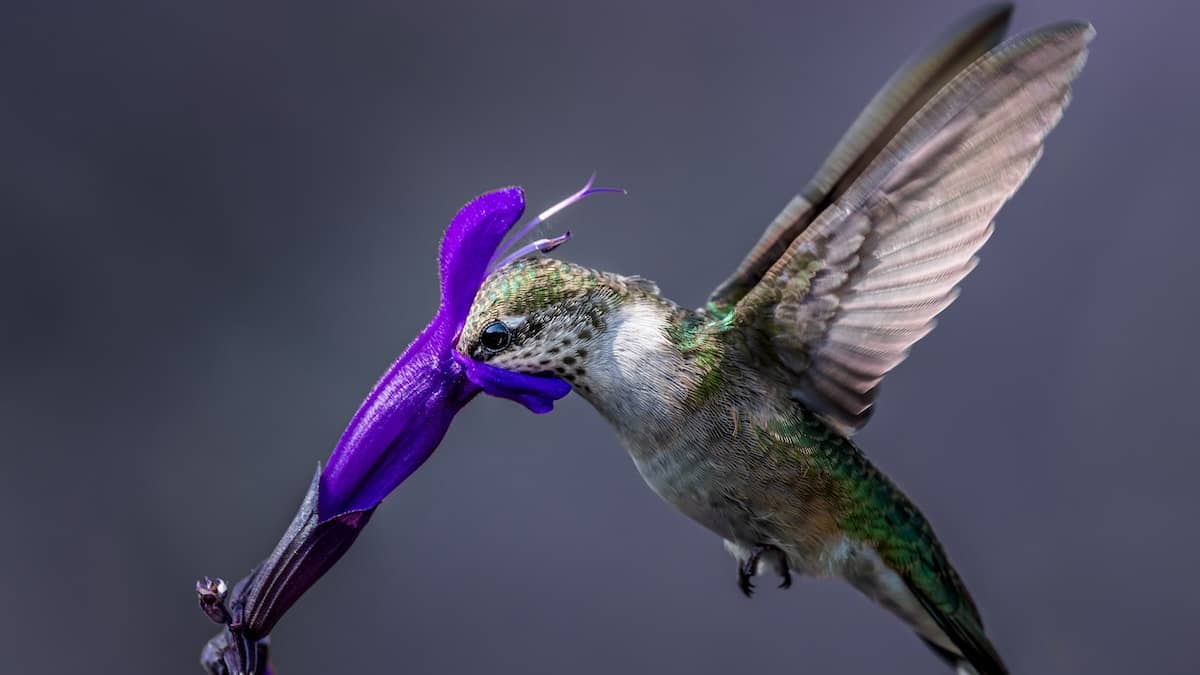Hanging hummingbird feeders is an old, fun tradition in North American culture. When these fascinating birds come along, moods pick up, and life is good.
After disappearing for months on end, the migration back to your area is undoubtedly impressive. Every spring, millions of hummingbirds travel back into our world. Every winter, a majority of hummingbirds from North America go down to Mexico and some Central American countries to escape the cold weather. Once the temperature changes in North America, they migrate back before leaving a few months later.
Hummingbirds have an excellent memory, and it is ingrained in them that North America is a safe, warm place to reside in the summer. In fact, they can remember specific feeders throughout the continent to return exactly to that spot year after year. By setting up a feeder, you can help these tiny creatures continue their summer tradition while creating a unique connection with nature for you and your loved ones.
So, when is the best time to put out your hummingbird feeder? Timing is everything. Setting them out at the right time ensures that these feathered friends can come back and enjoy that sweet nectar in your presence. Get ready to welcome the hummingbirds back to your yard this spring!
In this Guide:
Calendar of When to Put Out Hummingbird Feeders
Before we get to a weekly breakdown, here are some general points about the months and regions of North America that hummingbirds will come through.
Southern U.S.: February and March
This is when the hummingbird season officially begins. The southern states will see the first birds coming back to the region. In states like Florida, Georgia, and Alabama, feeders can be put out in February, and the hummingbirds will follow shortly.
Central U.S.: March and April
As the months start to progress, the hummingbirds work their way north. The midwest and some of the eastern states will start to see some action in March and April.
Northern U.S.: April and May
At this point in time, a majority of the United States either has hummingbirds around or your feeders should already be out. States like Minnesota and Wisconsin will start to see some more action during this period.
Canada and Alaska: May and June
May and June are the final two months for hummingbird migration in this region of the world. Canadian provinces and Alaska are finally ready for feeders in May.
| Date | States |
|---|---|
| March - Week 1 | Arizona, Florida, Louisiana, Texas |
| March - Week 2 | Alabama, Kentucky, Oregon, Washington |
| March - Week 3 | Arkansas, Georgia, Maryland, Mississippi, Missouri, North Carolina, South Carolina |
| March - Week 4 | Utah |
| April - Week 1 | Alaska, Indiana, New Mexico, Oklahoma, Pennsylvania, Tennessee, Virginia |
| April - Week 2 | California, Colorado, Kansas |
| April - Week 3 | Delaware, Rhode Island, West Virginia |
| April - Week 4 | Connecticut, Idaho, Illinois, Iowa, Maine, Massachusetts, Montana, Nebraska, New Jersey, New York, Ohio |
| May - Week 1 | Michigan, Minnesota, Nevada, New Hampshire, South Dakota, Vermont, Wisconsin, Wyoming |
| May - Week 2 | North Dakota |
But Can The Hummingbird Season Change Its Dates?
Although the weeks above are quite accurate, there are a few factors that can change when hummingbirds will make it to their destination.
Lack of resources
With our world constantly changing and evolving, the lack of resources poses a real issue. Especially with deforestation and the moving of other resources, the homes hummingbirds are used to going to can disappear. When this happens, the time in which hummingbirds come along can change because they have to move to other areas.
Weather
Major weather events that come up can affect the migration and speed thereof. For example, if there is a large hurricane in the southern United States or the wind is higher than usual for some reason, the migration will be affected.
Some other factors that can delay migration are dense rain, random storm cells, and more. You also need to consider climate change in general. There is no doubt that our planet is changing, and this will have effects on wildlife.
Predators
The number of predators can fluctuate from year to year. So, if there is a higher predator density one year, the migration can be delayed or lessened. Frogs, lizards, snakes, fish, and other birds are natural predators to the hummingbird.
Bonus: Tips for Feeding Hummingbirds
Having some tips about feeding hummingbirds will put you in a good position to enjoy them year after year. Here is some advice about feeding hummingbirds!
Set up your feeder before the scheduled week
When you set up your hummingbird feeder a couple of weeks in advance, you can still attract some in the area that may be there a bit early. Since it does not hurt to have everything set up early, you may as well take advantage of the birds that are already in the area.
Especially if your hummingbirds have been coming back year after year and are attached to your setup, they may end up coming back earlier than usual.
Use a variety of feeders
Just like humans, hummingbirds do have preferences when it comes to feeding. Especially if you are just starting up, get a few different types of feeders and spread them out accordingly. This gives the migration many options in case they do not like one of the feeders.
The best way to keep a variety is by getting a few different designs. Many feeders are plastic, but some of the nicer ones are glass. Mix it up between the two with different builds and colors to maximize the chances of harboring a healthy hummingbird community.
Be wary of windows
One of the worst things you can do is affix your hummingbird feeder in an area that puts the bird at risk. Windows are tricky because they are clear. If you have a screen, the bills can get stuck and create more issues. Either way, you need to be super conscious about where you place the feeder.
As a general rule, feeders should be at least five feet from a window. This ensures that there will be far fewer accidents. If you want it closer to a window, you can put it right up next to it. This way, the hummingbird can see the window and will not injure itself.
Make your own nectar
These days, you can buy hummingbird feed at a store with no issues. But, why not just make your own nectar? It is super easy to do, it will save you money, and it will connect you even more with nature.
Hummingbird nectar is simply white cane sugar and water. It is super easy and affordable to make in your own home. Now, it is super important to use the right sugar to keep the hummingbirds healthy. Do not use any other sugar than white cane sugar as you will be messing with their internals otherwise.




